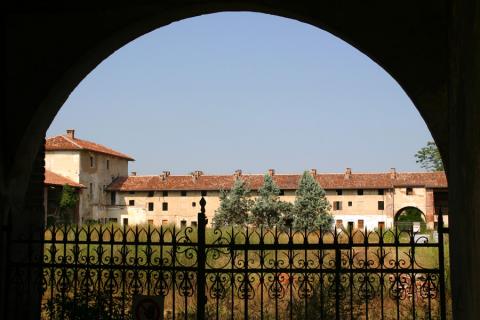The Sforzesca is in the surrounding area of Vigevano and rises up on a high natural terrace which overlooks the Ticino valley. It was commissioned by Ludovico il Moro and built from 1486 onwards; it later became the example for agricultural organization in the Po valley area, also well known for mulberry trees cultivation and therefore silkworms breeding.
Leonardo’s drawings have been of essential importance as the design of the town planning scheme is concerned. The irrigation canals designed by the artist are still in use in the countryside surrounding the Sforzesca. The Colombarone was the archetype model of a working farm in the Lombard area.

The complex has the typical layout of a castle with four buildings along the sides and four towers at the corners called the "colombaroni", around a practically square, central courtyard. The towers are decorated with pointed arched windows and sawtooth friezes. Here Leonardo resided helping to improve the land with waterworks designs for a better irrigation of the fields.
There are frequent references to this in the manuscript H (preserved in Paris at the Institute of France): annotations and drawings ranging from hydraulic devices to land reclaiming, agronomic observations are dated February-March 1494 in Vigevano right in the Sforzesca .